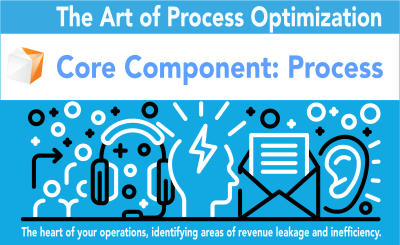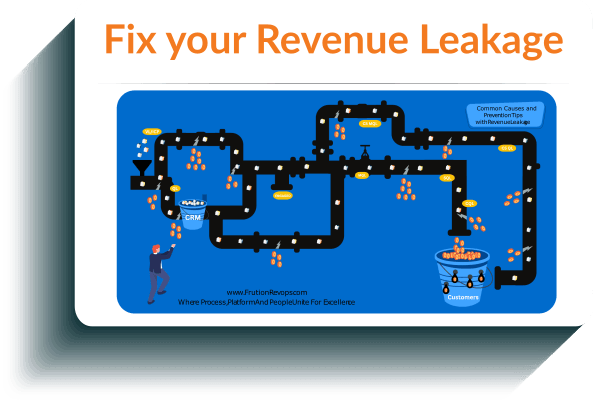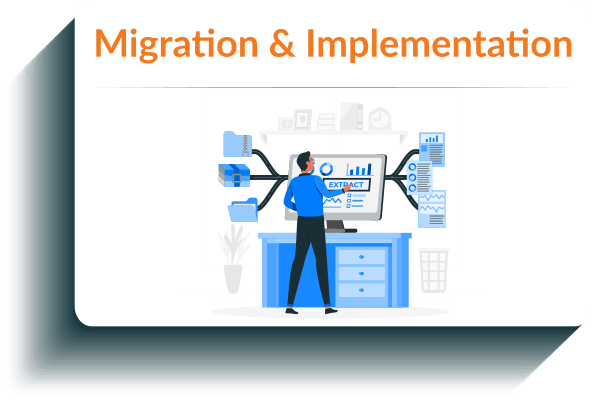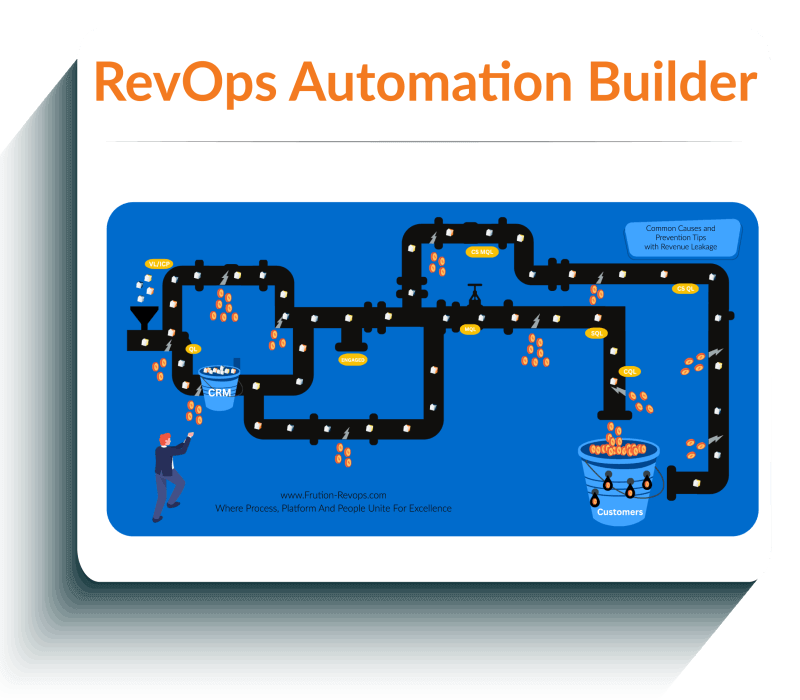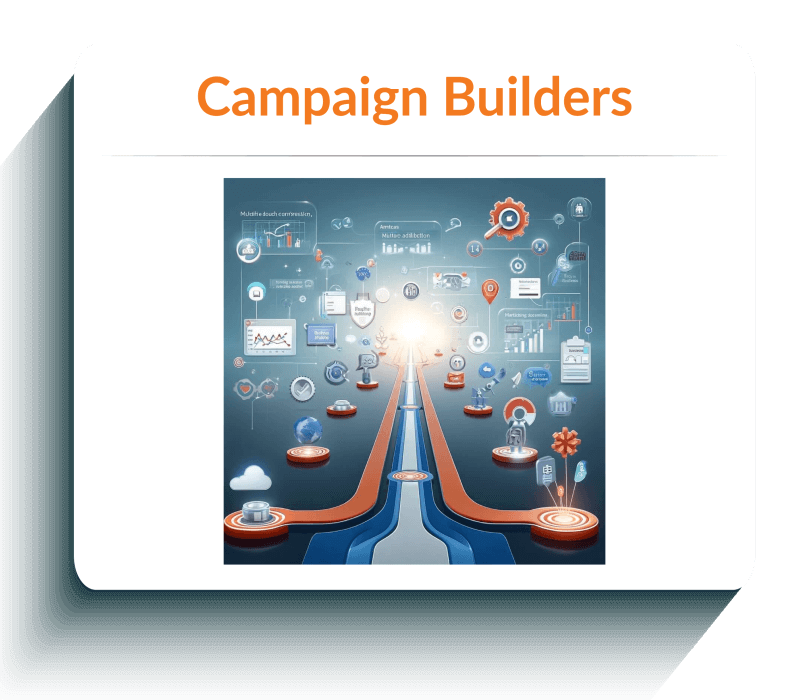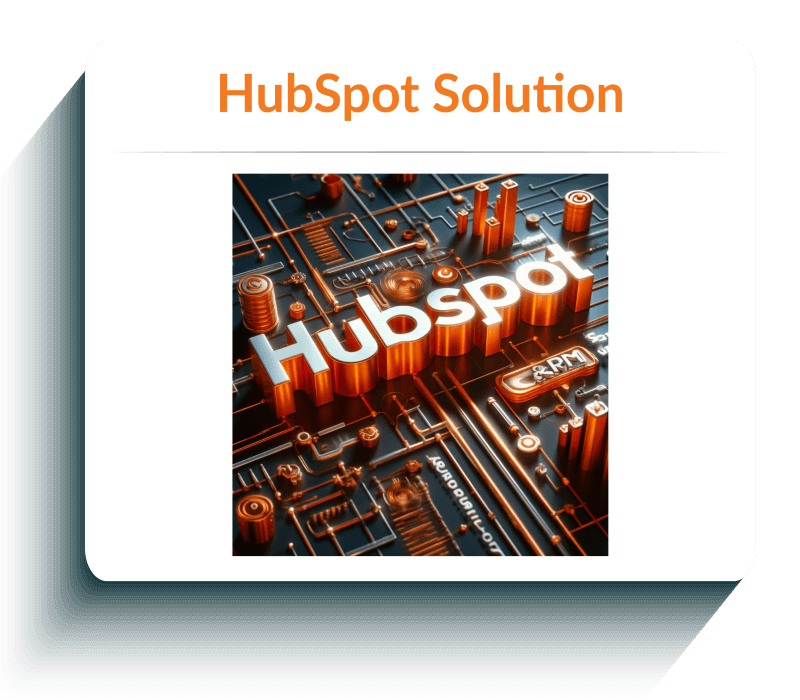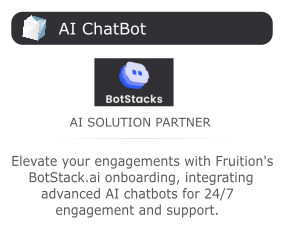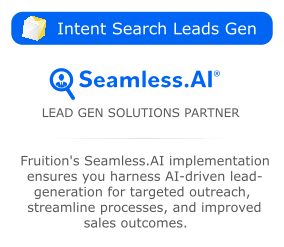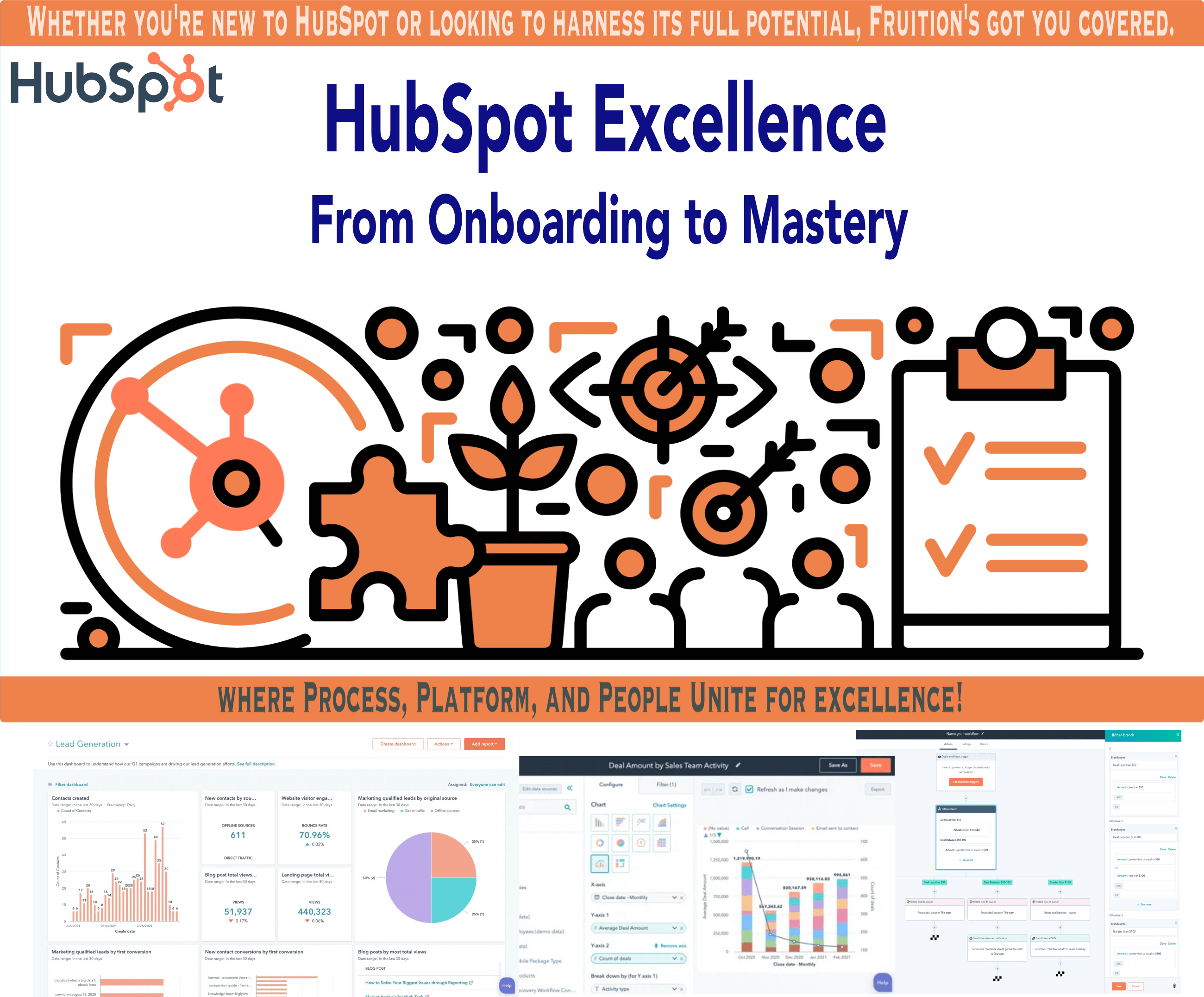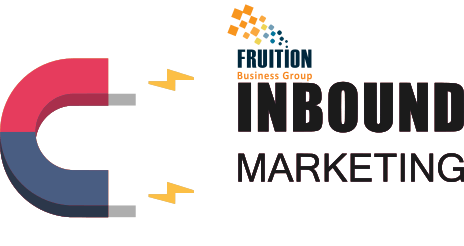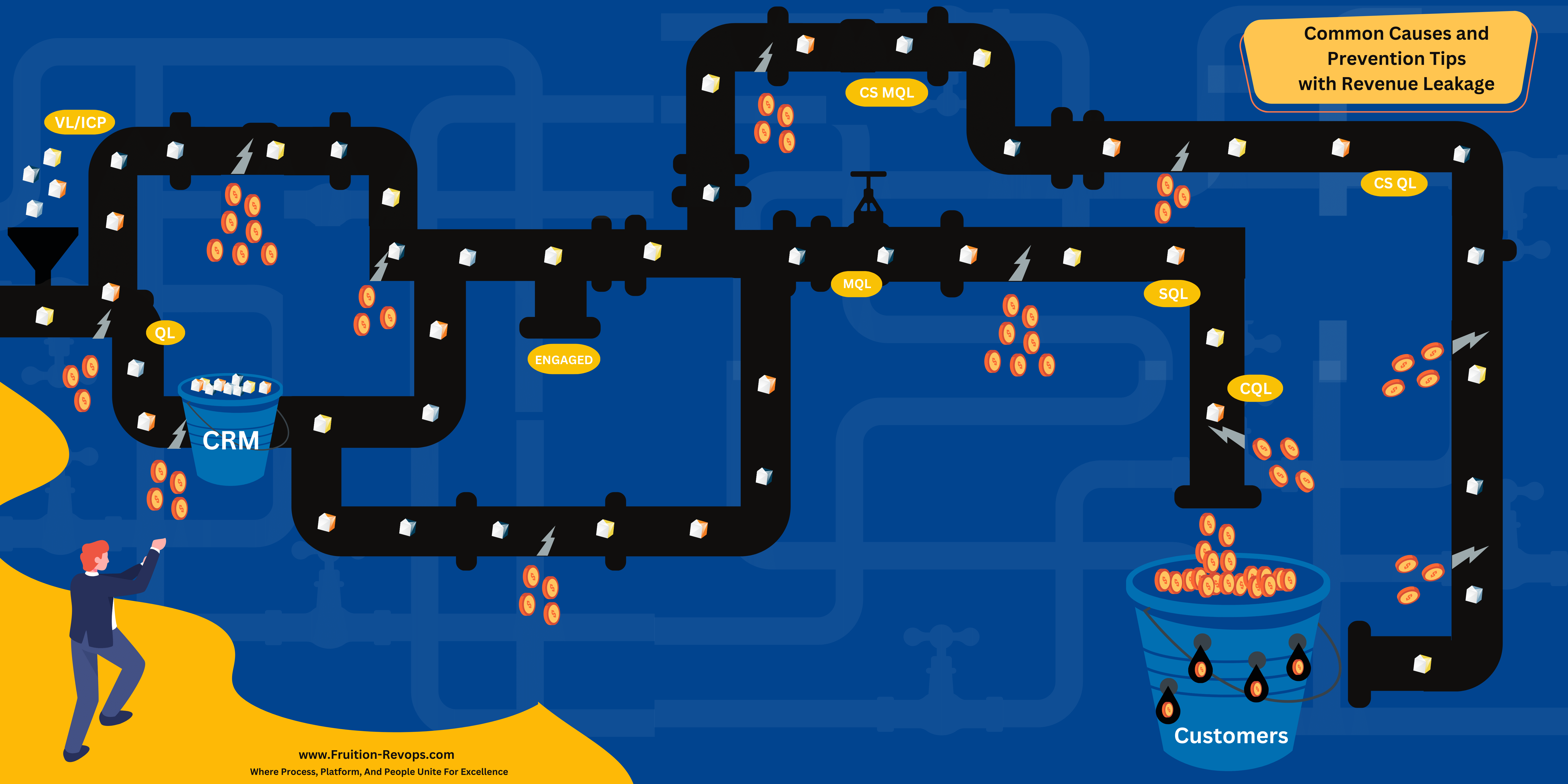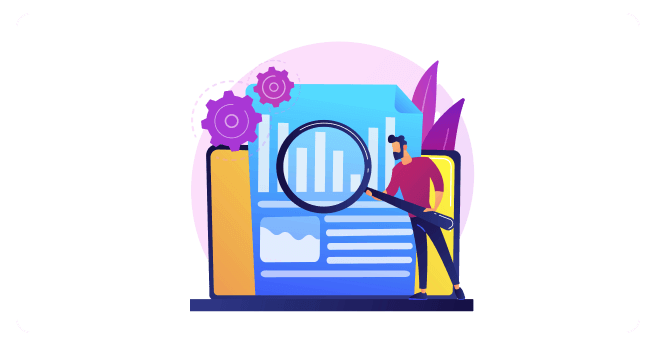 RevOps Core Components
RevOps Core ComponentsPartner with us to streamline
your growth through our
Four Core ComponentsWe focus on eliminating revenue leaks, enhancing operations, boosting customer engagement, and making informed decisions to drive your competitive edge and sustainable growth.
 Full-Stack RevOps
Full-Stack RevOps
Full Stacks RevOps services which provide a variety of Services in order to help you to build and grow to generate more Revenue and increase profitability.

Full Stacks RevOps services which provide a variety of Services in order to help you to build and grow to generate more Revenue and increase profitability.
 We architect your tech stack for enhanced engagement and conversions, featuring VideoTube content, CRMs, OmniChannel strategies, AI ChatBots, and more. Empower your brand across all touchpoints.HubSpot centralizes your marketing, sales, and service data, streamlining processes and empowering teams with a unified view for more effective decision-making and accelerated growth.
We architect your tech stack for enhanced engagement and conversions, featuring VideoTube content, CRMs, OmniChannel strategies, AI ChatBots, and more. Empower your brand across all touchpoints.HubSpot centralizes your marketing, sales, and service data, streamlining processes and empowering teams with a unified view for more effective decision-making and accelerated growth.Integrating AI across RevOps optimizes interactions, enhances customer service, improves lead scoring, automates routine tasks, and drives data-driven decisions, boosting overall business outcomes
 We work with your team to design and execute tailored campaigns and workflows per your organization’s objectives and departments.Explore a variety of campaigns and funnels designed to specifically address areas of revenue leakage and boost your performance.We architect your tech stack for enhanced engagement and conversions across all touchpoints, featuring VideoTube content, CRMs, OmniChannel strategies, AI ChatBots, and more.
We work with your team to design and execute tailored campaigns and workflows per your organization’s objectives and departments.Explore a variety of campaigns and funnels designed to specifically address areas of revenue leakage and boost your performance.We architect your tech stack for enhanced engagement and conversions across all touchpoints, featuring VideoTube content, CRMs, OmniChannel strategies, AI ChatBots, and more.Full Stacks RevOps services which provide a variety of Services in order to help you to build and grow to generate more Revenue and increase profitability.

We architect your tech stack for enhanced engagement and conversions, featuring VideoTube content, CRMs, OmniChannel strategies, AI ChatBots, and more. Empower your brand across all touchpoints.
HubSpot centralizes your marketing, sales, and service data, streamlining processes and empowering teams with a unified view for more effective decision-making and accelerated growth.We architect your tech stack for enhanced engagement and conversions across all touchpoints, featuring VideoTube content, CRMs, OmniChannel strategies, AI ChatBots, and more.Full Stacks RevOps services which provide a variety of Services in order to help you to build and grow to generate more Revenue and increase profitability.

Seamless Integrations that not only build better processes but also enhance engagement and empower your team.
We architect your tech stack across all touchpoints, featuring VideoTube, CRMs, OmniChannel, AI, and more.
Whether you need to enhance your existing HubSpot setup or are just starting out, we’re here to help.
Integrating AI across RevOps optimizes interactions, enhances operation, and automates routine tasks.
 We work with your team to design and execute tailored campaigns and workflows per your organization’s objectives and departments.
We work with your team to design and execute tailored campaigns and workflows per your organization’s objectives and departments.
Learn HowExplore a variety of campaigns and funnels designed to specifically address areas of revenue leakage and boost your performance.
Learn HowWe architect your tech stack for enhanced engagement and conversions across all touchpoints, featuring VideoTube content, CRMs, OmniChannel strategies, AI ChatBots, and more.
Learn HowFull Stacks RevOps services which provide a variety of Services in order to help you to build and grow to generate more Revenue and increase profitability.
 We architect your tech stack for enhanced engagement and conversions, featuring VideoTube content, CRMs, OmniChannel strategies, AI ChatBots, and more. Empower your brand across all touchpoints.
We architect your tech stack for enhanced engagement and conversions, featuring VideoTube content, CRMs, OmniChannel strategies, AI ChatBots, and more. Empower your brand across all touchpoints.
Learn HowHubSpot centralizes your marketing, sales, and service data, streamlining processes and empowering teams with a unified view for more effective decision-making and accelerated growth.
Learn HowWe architect your tech stack for enhanced engagement and conversions across all touchpoints, featuring VideoTube content, CRMs, OmniChannel strategies, AI ChatBots, and more.
Learn How Our System’s Partners
Our System’s Partners Knowledge Center
Knowledge CenterLatest Blogs
Recorded Events
Collateral to Download
 Pricing
Pricing
The Critical Role of Revenue Leakage Detection in the Top Funnel: A Comprehensive Use Case
In the dynamic world of digital marketing, sales, customer services, and RevOPs as a whole, understanding and optimizing the top of the sales funnel is crucial for any business aiming to maximize its revenue potential. This use case delves into the importance of identifying revenue leakages at the top funnel, illustrating the impact through a real-world scenario involving Google Ads optimization and website design changes.
Types of Funnels in Marketing and in RevOps
RevOps methodology, funnel marketing is segmented into three stages: top (ToFu), middle (MoFu), and bottom (BoFu), guiding potential customers from awareness to purchase. Each stage targets different customer engagement levels, ensuring a seamless journey through awareness, consideration, and decision phases.
Top Funnel (ToFu): Awareness Stage
The top focuses on generating brand awareness with educational content like blog posts, social media, and videos, aiming to solve industry-related problems without immediate returns.
Middle Funnel (MoFu): Consideration Stage
In the middle, strategies involve nurturing leads with targeted content such as email campaigns, webinars, and guides, focusing on how your offerings solve identified problems.
Bottom Funnel (BoFu): Decision Stage
The bottom stage encourages purchase decisions through demos, free trials, testimonials, and personalized consultations, addressing specific concerns and highlighting benefits.
Importance of Alignment

Back to the Use Case
Understanding Revenue Leakage in the Top Funnel
Revenue leakage in the top funnel refers to potential revenue lost due to inefficiencies or gaps in the initial stages of the customer journey. These inefficiencies can stem from various factors, including poorly targeted ads, ineffective landing pages, or unclear call-to-actions (CTAs), leading to lower conversion rates and wasted marketing spend. Identifying and addressing these leakages is essential for businesses to ensure that every marketing dollar contributes to the bottom line.


The Impact of Optimized Google Ads and Site Design on Conversion
One of our clients, a mid-sized e-commerce platform, faced challenges with low conversion rates from their Google Ads campaigns. Initially, the campaigns were generating only 1-2 registrations per day, with an acquisition cost far exceeding the industry average. Recognizing the need for a strategic overhaul, we embarked on a comprehensive analysis of their top-funnel activities, focusing on Google Ads performance and website design.
Google Ads Optimization

The Website Redesign Setback
Buoyed by the success of the Google Ads optimization, the company’s designers decided to undertake a complete website redesign without consulting the RevOps and marketing teams. They believed that a fresh design based on aesthetic considerations rather than conversion optimization principles would further enhance the site’s performance.
However, the redesign had the opposite effect. Despite maintaining the same levels of impressions and click-through rates from the Google Ads, registrations dropped to 20 in the four days following the launch of the new site. This stark decline, from 57 registrations the week before the redesign to none, highlighted a critical oversight: the redesign neglected the strategic placement and messaging of CTAs, which had been key to the previous conversion success.


Lessons Learned: Every Detail Matters in Funnel Optimization
This case study serves as a powerful reminder of the importance of every detail in the customer journey, especially in the top funnel. The initial success with Google Ads optimization demonstrated how targeted improvements could significantly enhance conversion rates and reduce acquisition costs. However, the subsequent website redesign illustrated how easily gains could be negated by overlooking the fundamentals of conversion optimization.
Presenting Statistics on Top Funnel Conversion
Statistics on top funnel conversion underscore the significance of meticulous optimization. Industry benchmarks suggest that the average landing page conversion rate across industries is around 2.35%, yet the top 25% of sites achieve conversion rates of 5.31% or higher. This disparity highlights the potential for businesses to dramatically improve their top-funnel performance through targeted optimizations.
Moreover, research indicates that personalized CTAs can increase conversion rates by up to 202% compared to generic ones. Which is doable on HubSpot CTA features.
This statistic further emphasizes the importance of customizing the user experience at every touchpoint to maximize engagement and conversions.

The Critical Role of Revenue Leakage Detection in the Top Funnel
Revenue leakage refers to the loss of potential or actual income due to inefficiencies, errors, or fraudulent activities within a company's processes and systems.
Summary


